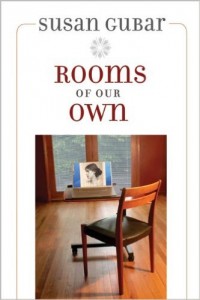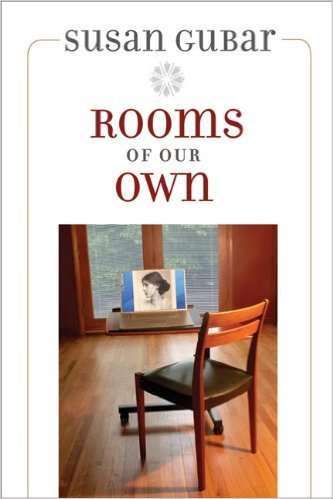 Rooms of Our Own
Rooms of Our Own
by Susan Gubar
University of Illinois Press. 223 pages, $19.95 (paper)
SUSAN GUBAR is a professor of English at Indiana University, the recipient of several awards for writing and scholarship, and the co-author (with Sandra Gilbert) of The Madwoman in the Attic: The Woman Writer and the Nineteenth-Century Literary Imagination. Her latest book, Rooms of Our Own, a novel that’s an homage to Virginia Woolf’s A Room of One’s Own, examines contemporary women’s issues as they relate to feminism, gender roles, literature, and education in the 21st century. The first-person narrator reflects on the feminist movement of the past fifty years, the costly and hard-fought gains, and the painful and humiliating losses. Women are no longer refused entrance to libraries, universities, or tenure-track positions, but the “nugget of truth” our narrator offers is that, while opportunities for women have increased, women still take care of the children and, later, the elderly parents, all the while carrying out the domestic chores.
Rooms of Our Own is structured in six chapters that attack different but related issues while advancing a plot that moves through one academic year. The author’s stream-of-consciousness narrative style is reminiscent of Virginia Woolf’s prose, which could be a problem for many contemporary readers, who may find this style slow and tedious. There are no chase scenes or sex scenes, though there is an unsolved co-ed murder, which, however, is a subject for contemplation rather than a mystery story.
Gubar goes beyond Virginia Woolf’s argument that a woman needs a room of her own and 500 pounds a year to write. Gubar’s narrator, Mary Beton, shares her name with Woolf’s aunt, who left her niece an inheritance. One may remember that for Woolf this legacy and the right to vote came at the same time, and, of the two, the money was far more important. Money is also pretty darned important to the women of today. As Gubar lures the reader into the workings of the university, she demonstrates that money, or lack of it, regulates what women can accomplish as far as scholarship and publication are concerned. Without money, one’s ability to write and publish is limited. The institutional obstacles to getting a job have been replaced by the logistical problem of finding time to work, write, conduct research, and publish enough to win tenure. What money buys the contemporary woman is help with the domestic responsibilities that detract from her ability to succeed.
Moreover, it happens that women entered higher education just when the value of a liberal arts education was declining in Western cultures. Our narrator claims that today we’re in a “post-literate” age. While grading essays she asks herself, “How much longer could I expect myself to pencil in corrections to sentences that committed atrocities beggaring description, even (as in this case) when composed by junior or senior English majors?” I particularly appreciated her revelations about the state of education today: the use and abuse of adjunct lecturers, ignorant and lazy students, and tenured faculty members’ elitism. The narrator describes a faculty luncheon: “I recognized all my colleagues around the table and knew from years of experience what insipid cruelty most were capable of. The assembly immediately suggested a barnyard or a wildlife sanctuary. For, gesticulating and swaying, eating and declaiming, coughing and wheezing, they resembled animals in a zoo.” She presents the Giraffe historian, the Turtle of medieval mysticism, the Duck who writes books on Italian film, and so on. Having attended some of those meetings, I found these parodies entertaining and on target.
So where do women stand today? While the question is simple, the answer is complex. The older generation, battle-scarred and compromised, is confounded by the new guard. Because the old guard believed that new things must be better, they have forced their way into systems that abused them and marginalized their work. While feminism is supposed to be about equality for women, those in the academy pride themselves on choosing and being chosen as worthier than others. Yet Gubar’s narrator ends with some hope. The door has inched open and “the next generation must have a chance for something better.”
____________________________________________________________________
Martha Miller is an author, a writing instructor, and a regular contributor to the G&LR. See her website www.marthamiller.net.






